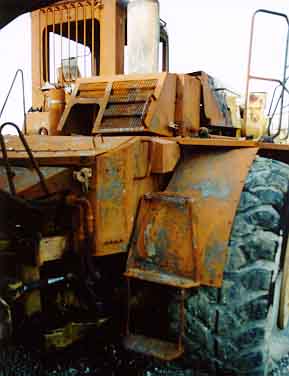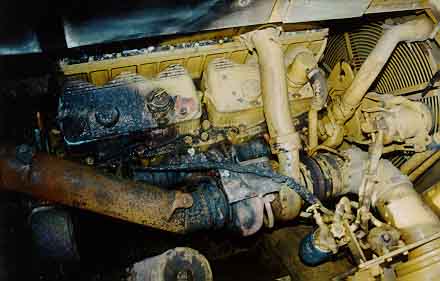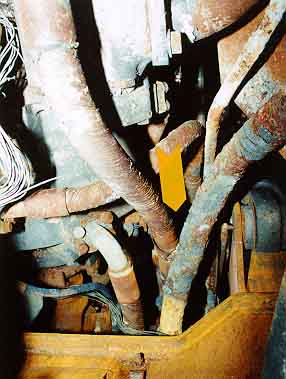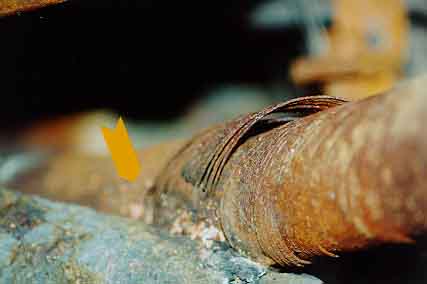CHAFFING OF HYDRAULIC HOSES
by
Charles C. Roberts, Jr.
Chaffing is the rubbing of two objects, causing
erosion of the surfaces and eventual failure. A past
article ("Wire Chafing, a Cause of Electrical Fires,"
Claims Magazine, April 1999) dealt with the chaffing
of electrical wire insulation, causing electrical
malfunctions. Briefly, the insulation wore away from
chaffing and caused an electrical short circuit or
fault. Likewise, with hydraulic hoses, chaffing of two
hoses together or the chaffing of one hose with
another surface results in side wall erosion and
eventual leakage. Under pressure, hydraulic fluid
leakage forms a fine mist, easily ignitable by hot
surfaces or electrical arcs.

Figure 1

Figure 2
Figure 1 is a view of a
rock truck that sustained a fire while in use. Figure
2 is a view of the engine compartment showing severely
burned areas to the rear of the engine, near hydraulic
lines and the hydraulic pump. The hydraulic lines
carry pressurized fluid for operation of cylinders
needed for turning of the vehicle.

Figure 3

Figure 4

Figure 5
In Figure 3, the
arrow points to two hydraulic hoses in the area of
severe thermal damage that are touching. Figure 4
shows the contact area and the failure of metal
reinforcing steel strands on the hoses. The chaffing
has resulted in wear through the polymer hose wall
into the reinforcing wire, which has failed, causing
loss of high-pressure strength and hydraulic fluid
leakage. Figure 5 shows the opening caused by the
chaffing. The escaping hydraulic fluid atomizes into
a volatile mist, which can be ignited easily by
various hot surfaces such as exhaust system surfaces
or electrical arcs from contacts (brushes on
generators or alternators). As shown by the chaffing
example, a property loss occurred. Hydraulic hose
failure can also cause loss of steering control and
personal injury. The chaffing of hoses is clearly a
design or manufacturing deficiency, assuming the
vehicle has not been altered by some intervening work
or repair. Prudent mechanical design dictates proper
support and securing of hoses using brackets, clamps
and other means.
FOR TECHNICAL ARTICLES CONTACT CLAIMS MAGAZINE AND ASK
FOR A REPRINT OF A PAST TECHNICAL NOTEBOOK ARTICLE
CLAIMS MAGAZINE






